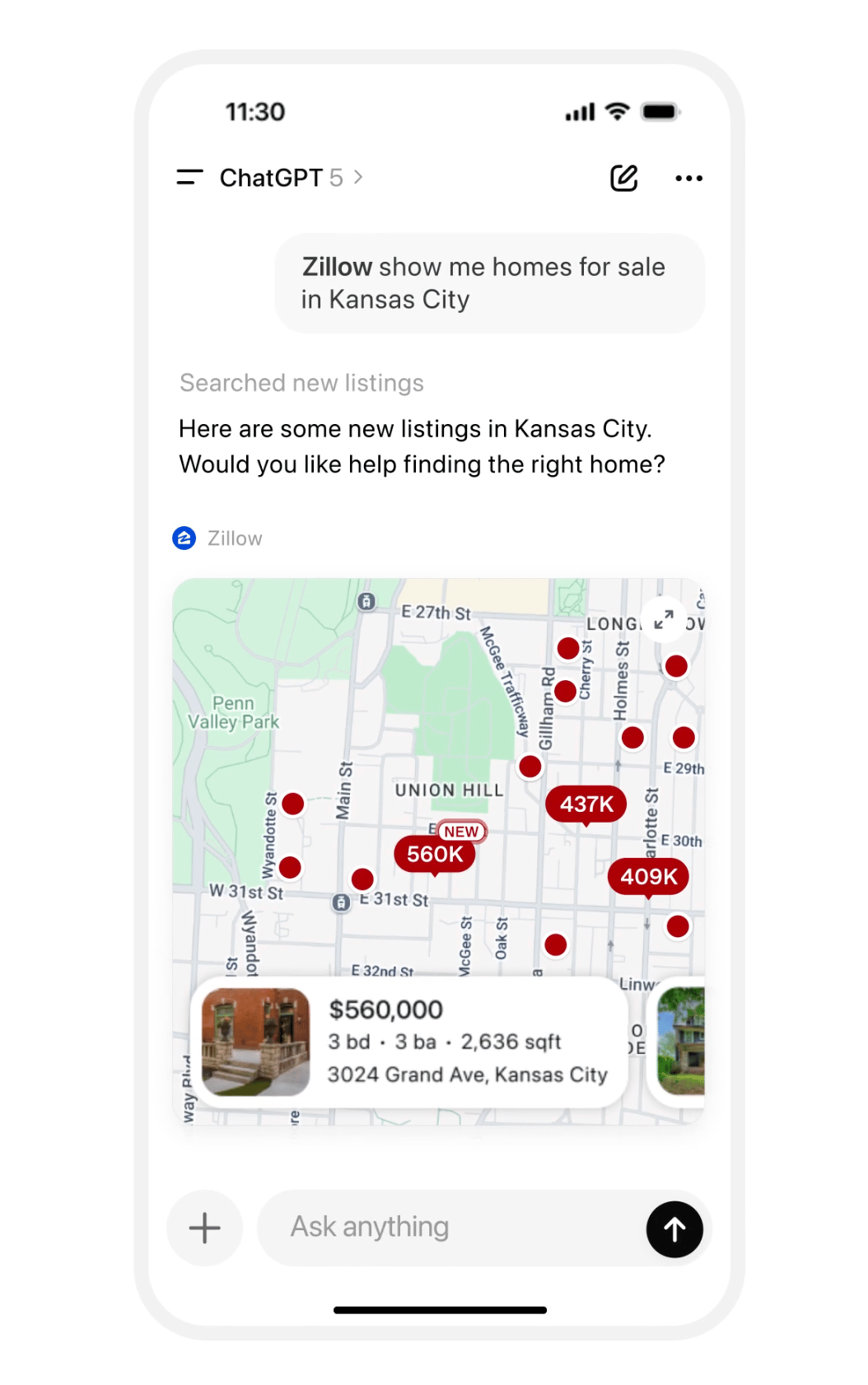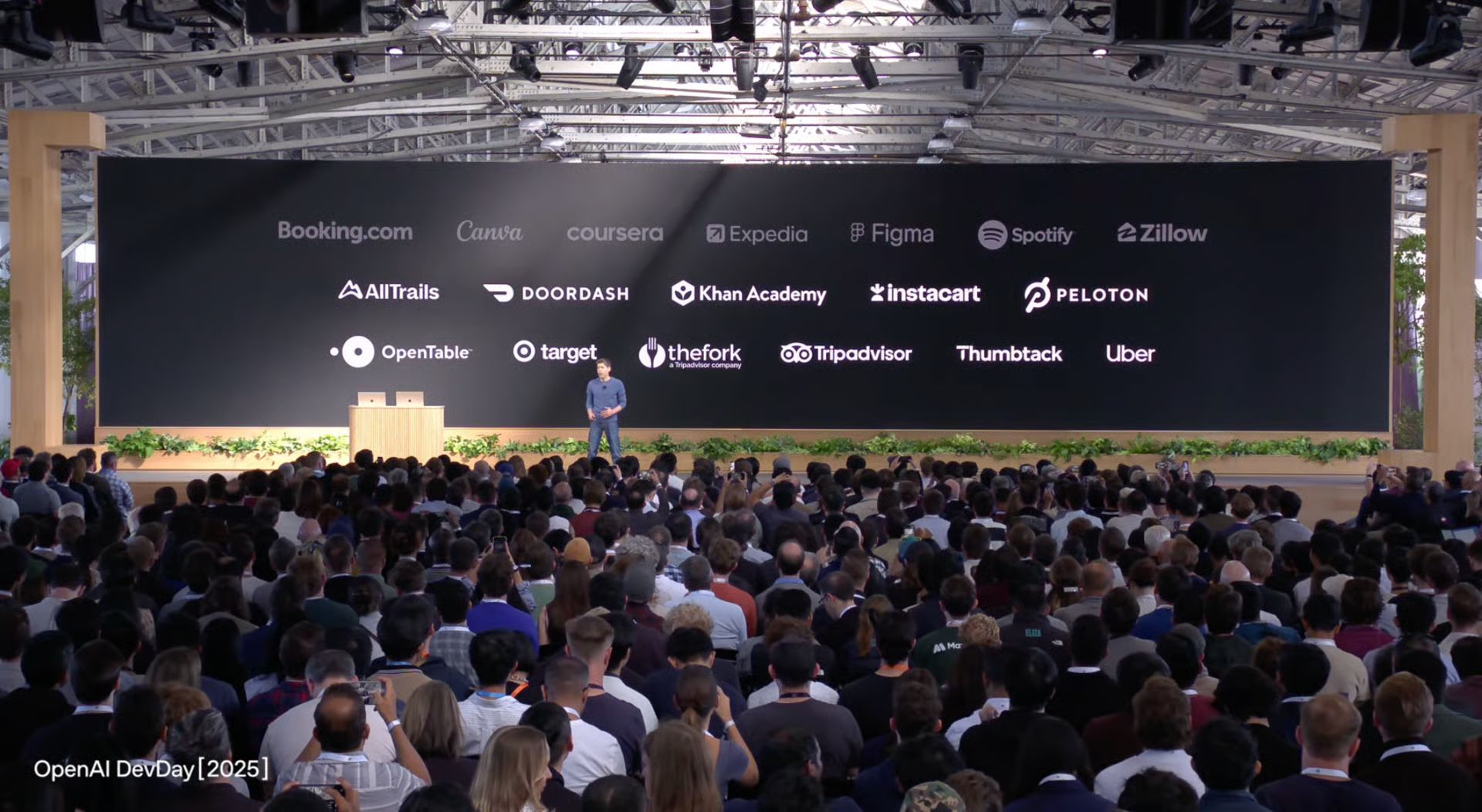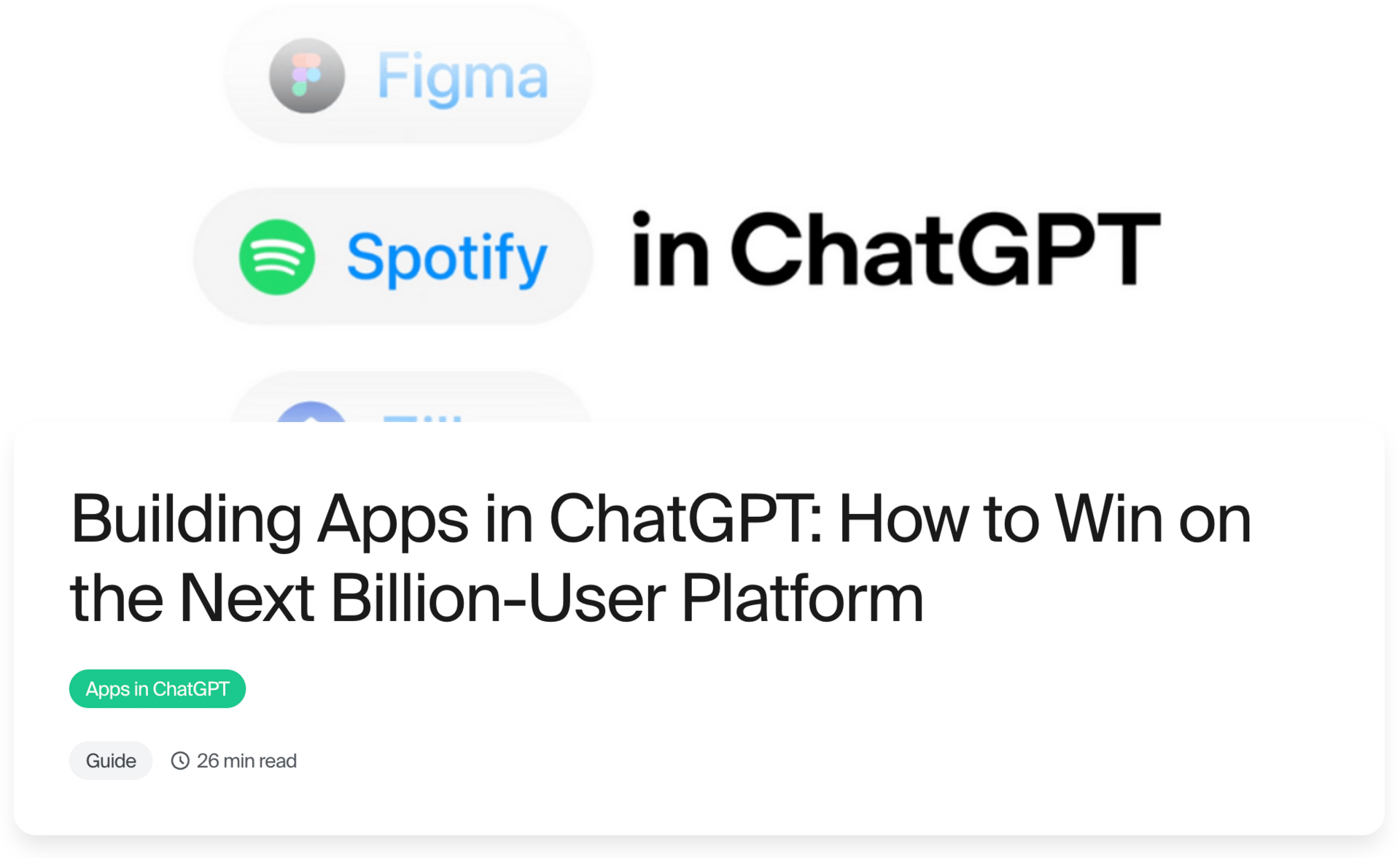- Elliot from Ghost Team
- Posts
- Apps in ChatGPT: 800 million users. Zero-click discovery. The distribution play nobody's talking about.
Apps in ChatGPT: 800 million users. Zero-click discovery. The distribution play nobody's talking about.
Plus: a full guide on how you can build your own apps
Hey builders,
Apps just launched inside ChatGPT. Billions of dollars will flow through this channel.
Cycles like this have happened before. Today, I wanted to dive into the pattern & how you can win.
We’re going to cover:
→ Why this distribution channel is different
→ The 4 phases of platform evolution (and where we are now)
→ The apps we've built + early access
→ FULL GUIDE on how to build apps in ChatGPT
Also, we recorded a full video that goes through what we cover below and more, incl. a demo of an app we’ve built to bring it to life:
Let’s get into it.
The Distribution Opportunity
ChatGPT already has 800 million monthly users and rising.
Now with apps, these users have less and less reason to leave.
Here's what this looks like in practice:
Someone's drafting a legal contract in ChatGPT and says "I need a lawyer to review this." A Fiverr app appears right there. They create a project to find freelancers in seconds. All without leaving the chat.
As a user, this is great. No hopping between platforms.
As a brand, you meet users in their workflow at the moment of highest intent. Zero clicks to discover. Zero friction to use.

Example: Zillow App inside ChatGPT
This kind of access to hundreds of millions of users is rare. But when it happens, it's massive:
→ Facebook with its marketplace
→ Google with SEO and search ads
→ iPhone with the App Store (around $90 billion is spent in the app store annually)
And there's a pattern to how these platforms evolve.
The Four Phases of Platform Distribution
Phase 1: Market conditions met (AI race 2022-23, no clear winner yet)
Multiple heavyweights battle it out. OpenAI, Anthropic, Google, xAI, Meta and many more - all building LLMs. Talent wars. Rapid releases. Billions in capital flowing in.
This competitive pressure makes a platform play both necessary and possible. The first to harness an ecosystem can break away from the pack.
Phase 2: Identifying the moat (OpenAI: 800M users)
One player discovers the advantage that compounds with usage - then races to deepen it.
For OpenAI, it's not just model quality.
It's context + memory.
The system that knows you, your data, your history.
More usage → richer context → better outputs → more usage. The flywheel spins faster.
They've hit 800 million+ monthly users. I’d argue the moat is established.
Phase 3: Platform opening (Apps SDK live, gold rush begins) ← WE ARE HERE
You can't build the moat alone. So you invite third parties to extend use cases and drive engagement.
The value exchange: "Build on us, we give you distribution + access to our users' context."
This is the magical period. The platform subsidizes organic reach to accelerate its own advantage. Apps grow unusually fast because discovery is being handed to them.
Apps SDK just dropped. Developer Mode is live. App directory coming later this year.
The gates just opened.
Phase 4: Platform closing & monetization (revenue cuts, app cloning, reduced distribution - coming 2026/27+)
Once dominant, platforms tighten control to protect defensibility and harvest value.
The playbook:
→ Absorb top use cases into native features
→ Reduce organic distribution (your app stops showing up as much)
→ Force paid placements to maintain visibility
→ Take bigger revenue cuts
Facebook did exactly this. So did Google. iOS. LinkedIn.
Open wide to win. Close to harvest.
OpenAI will follow the same arc.
We don’t know how long Phase 3 will last
The cycle is compressing.
iPhone's gold rush was 2-3 years. Facebook's was 18 months. This one might be 12 months.
You don't get time to wait for perfect certainty anymore. By then, the distribution subsidy is gone.
Big Brands Are Already Seeing This

Brands already with Apps in ChatGPT
Major companies have already partnered with ChatGPT to build apps you can use today: Shopify, Booking.com, Canva, Zillow and more.
Very soon, it opens to everyone (right now, you can build apps but only in developer mode).
In fact, a few hours ago DocSign announced they’ll soon have an app inside ChatGPT
Docusign is coming soon to ChatGPT! 🎉
We're bringing Docusign's contract expertise directly into @OpenAI and ChatGPT connector, eliminating app switching and friction.
Find out more about the future of Docusign and ChatGPT!
ow.ly/ShN350XkrhQ— Docusign (@Docusign)
3:23 PM • Oct 30, 2025
This Means, The Window to Move is Now
Do you need an exit plan for when the platform takes control? Yes. But can you afford not to play the game? Absolutely not.
This experience will become an EXPECTATION. As workflows move inside ChatGPT, if your brand doesn't have an app in someone's workflow, they'll use a competitor that does.
For incumbents: Your competitors will build ChatGPT apps. If you don't, you lose distribution and don’t meet increasing expectations from your users to have experiences in LLMs.
Importantly, this doesn’t mean put all your resources into building an app for ChatGPT. It means allocate some budget for experimentation and building early with the apps SDK.
If this does become the distribution channel many expect it will be, you can put in more resources to optimise the experience over time.
For startups: You need to be all-in or stay out completely. You don't have resources to hedge bets.
The window is already closing. Most verticals still have zero competition. By mid-2026, expect saturation.
Platform dependency is real:
→ They control your distribution completely
→ They might clone your successful app
→ Revenue models are unclear (details "coming later this year")
The key is building distribution outside ChatGPT from day one. Email list. Web version. Social following. Other channels. Never depend entirely on this platform.
But you have to play. Because if you don't, your competitors will.
At Ghost Team, We've Been Building at the Edge of This
We've built 2 apps using the Apps SDK, both solving workflow fragmentation:
1. ChatGig (Fiverr for ChatGPT)
Draft a legal contract or design brief in ChatGPT, then say "create a gig for this." Instantly connects you with freelancers who can see your full chat context—without ever leaving the window.
2. Gradient Tweet App
Write your tweet, generate a professional gradient background, and share - all inside ChatGPT. No more jumping to Canva and back.
Both are meeting people where they already work instead of forcing them to leave ChatGPT.
Next week: We'll do a full breakdown of each app - the technical details, what worked, what didn't, and exactly how we built them.
Full Guide: Want to Get Ahead on Building Apps in ChatGPT for Your Brand?
We’ve created a guide sharing everything we know about building apps inside ChatGPT. It covers:
→ The opportunity (why zero-click discovery changes everything)
→ The four phases of platform distribution
→ What should you build?
→ Examples - apps we've built
→ How to get your app discovered
An exciting opportunity
These distribution opportunities don’t come around often.
We’re excited to be at the forefront, testing what’s possible.
As always, feel free to drop me a reply with feedback or questions Apps in ChatGPT or any other AI growth topics.
I read every reply!
Happy building,
Elliot
Learn how AI Agents & Applications can grow your business.
If your company or brand is interested in getting an app inside ChatGPT, we’d love to talk to you. We have limited spots available to work with ambitious teams who want to win distribution inside of this new platform.
Please book a strategy call with our team below.

